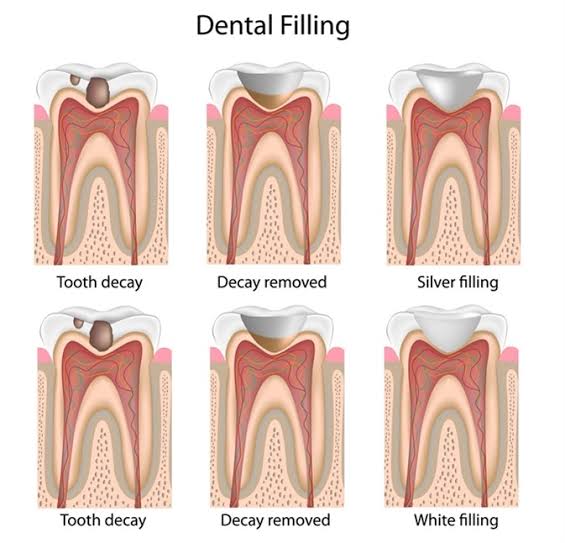How Do Fillings Work?
A filling can bring back the function and appearance of a tooth that has been decayed. A filling is performed by a dentist by first removing the decayed tooth material, cleaning the afflicted area, and then filling the cleaned out cavity with a filling substance.
A filling also aids in stopping additional degradation by preventing access points for microorganisms. Gold, porcelain, a composite resin (tooth-colored fillings), and an amalgam are some of the materials utilised for fillings (an alloy of mercury, silver, copper, tin and sometimes zinc).
Which Filling Type Is Best?
There is no one filler that works best for everyone. The degree of the repair, whether you are allergic to certain materials, the location of the filling in your mouth, the cost, and your personal preferences will all influence what is best for you. Various materials should be taken into account, including:
• Gold fillings are custom-made in a lab and afterwards cemented into position. Gold inlays can last up to 20 years and are well tolerated by gum tissues. For these reasons, gold is regarded by many experts as the ideal filler material. However, it frequently costs the most and calls for many visits.
• Amalgam (silver) fillings are durable and reasonably priced. They are not typically utilised in highly prominent places, such as front teeth, due to their dark hue, which makes them more obvious than porcelain or composite restorations.
• Composite (plastic) resins are utilised when a natural appearance is required since they can be matched to be the same hue as your teeth. The mixture is put into the cavity and allowed to sit there until it hardens. As they may chip or deteriorate over time, composites might not be the best material for large fillings. They normally endure between three and ten years, however they are susceptible to staining from coffee, tea, or smoke.
• Inlays and onlays are porcelain fillings that are made to order in a lab and then bonded to the tooth. They can be dyed to match the shade of the tooth and are stain-resistant. Most of the tooth is often covered by a porcelain restoration. They are comparable in price to gold.
A crown or cap may be advised if a significant amount of the tooth has been compromised by decay or a fracture. There are two techniques to treat decay that has spread to the nerve: pulp capping or root canal therapy, which involves removing the affected nerve (which attempts to keep the nerve alive).
What Takes Place After a Filling?
If you have a cavity that has to be filled, only your dentist can find it. Your dentist will use a small mirror to look at the surfaces of each tooth during a checkup.
Then, using specialised equipment, anything that appears strange will be thoroughly examined. Your entire mouth or a portion of it may be X-rayed by your dentist. Depending on the degree of decay-related damage, your dentist will determine the type of therapy.



